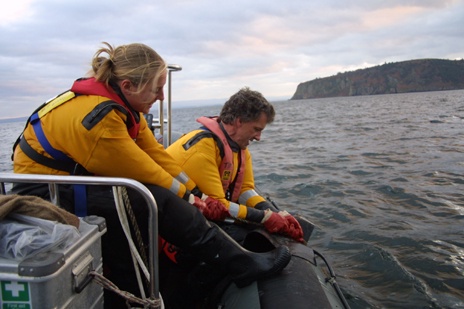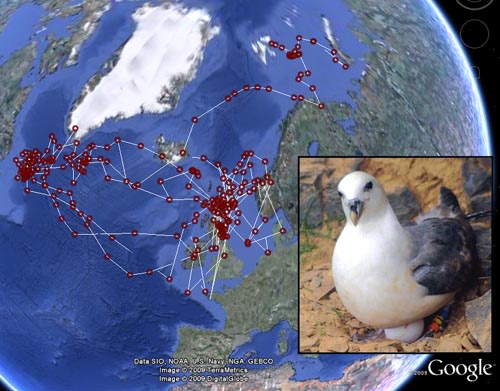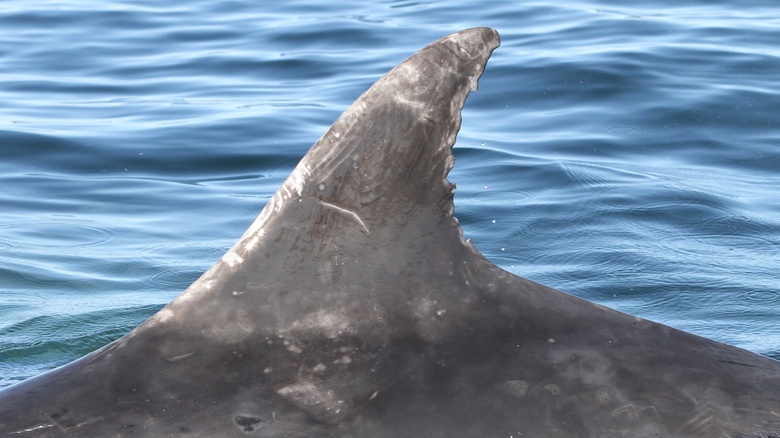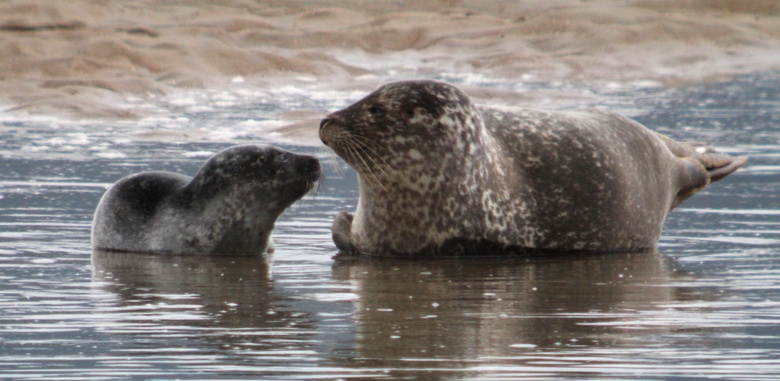- Photo-ID
-
Our boat-based photo-ID studies of the bottlenose dolphins on the east coast of Scotland started in 1989, and the majority of the population can be consistently recognised from distinctive nicks, tooth rakes and skin lesions on their dorsal fins. Regular surveys are made throughout each summer, contributing to population studies and gathering information on social structure and ranging patterns.
Example studies
Cordes, L.S., & Thompson, P.M. (2014) Mark-recapture modeling accounting for state uncertainty provides concurrent estimates of survival and fecundity in a protected harbor seal population. Marine Mammal Science 30: 691-705
Cheney, B., Corkrey, R., Durban, J.W., Grellier, K., Hammond, P.S., Islas-Villanueva, V., Janik, V.M., Lusseau, S.M., Parsons, K.M., Quick, N.J., Wilson, B., Thompson, P.M. (2014) Long-term trends in the use of a protected area by small cetaceans in relation to changes in population status. Global Ecology and Conservation 2: 118-128
- Passive Acoustics
-

Some of our earliest work using these passive acoustic techniques involved investigation of the male harbour seal's aquatic mating behaviour.
More recently, we have conducted large-scale studies of harbour porpoise and dolphin distribution and behaviour using echolocation detectors and broad band recorders that can be left moored for several months to detect passing cetaceans.
Example studies
Fernandez-Betelu, O., Graham, I.M., Cornulier, T., & Thompson, P.M. (2019) Fine scale spatial variability in the influence of environmental cycles on the occurrence of dolphins at coastal sites. Scientific Reports 9:2548
Van Parijs, S.M., Hastie, G.D. & Thompson, P.M. (2000) Individual and geographic variation in display behaviour of male harbour seals, Phoca vitulina, in Scotland. Animal Behaviour, 59: 559-568.
- Tracking
-

Our early studies in the Moray Firth used VHF-tags to provide new insights into the activity pattern and foraging distribution of harbour seals, while time-depth-recorders provided additional information on diving patterns. Today, much finer scale data can be obtained via the mobile phone network using GSM-GPS tags produced by colleagues at the Sea Mammal Research Unit.
GPS data loggers are now small enough to be used to track fulmars while they are foraging to collect food for their chicks. International collaboration through the SEATRACK project has used geolocation tags to track fulmars throughout the year, revealing how birds from different colonies disperse across the North Atlantic and into arctic waters.
Example studies
Davies, T.E., Carneiro, A.P.B., Tarzia, M., Wakefield, E., Hennicke, J.C., Frederiksen M, et al. (2021) Multispecies tracking reveals a major seabird hotspot in the North Atlantic. Conservation Letters 14
Thompson, P.M., Mackay, A., Tollit, D.J, Enderby, S. & Hammond, P.S. (1998) The influence of body size and sex on the characteristics of harbour seal foraging trips. Canadian Journal of Zoology, 76: 1044-1053.



